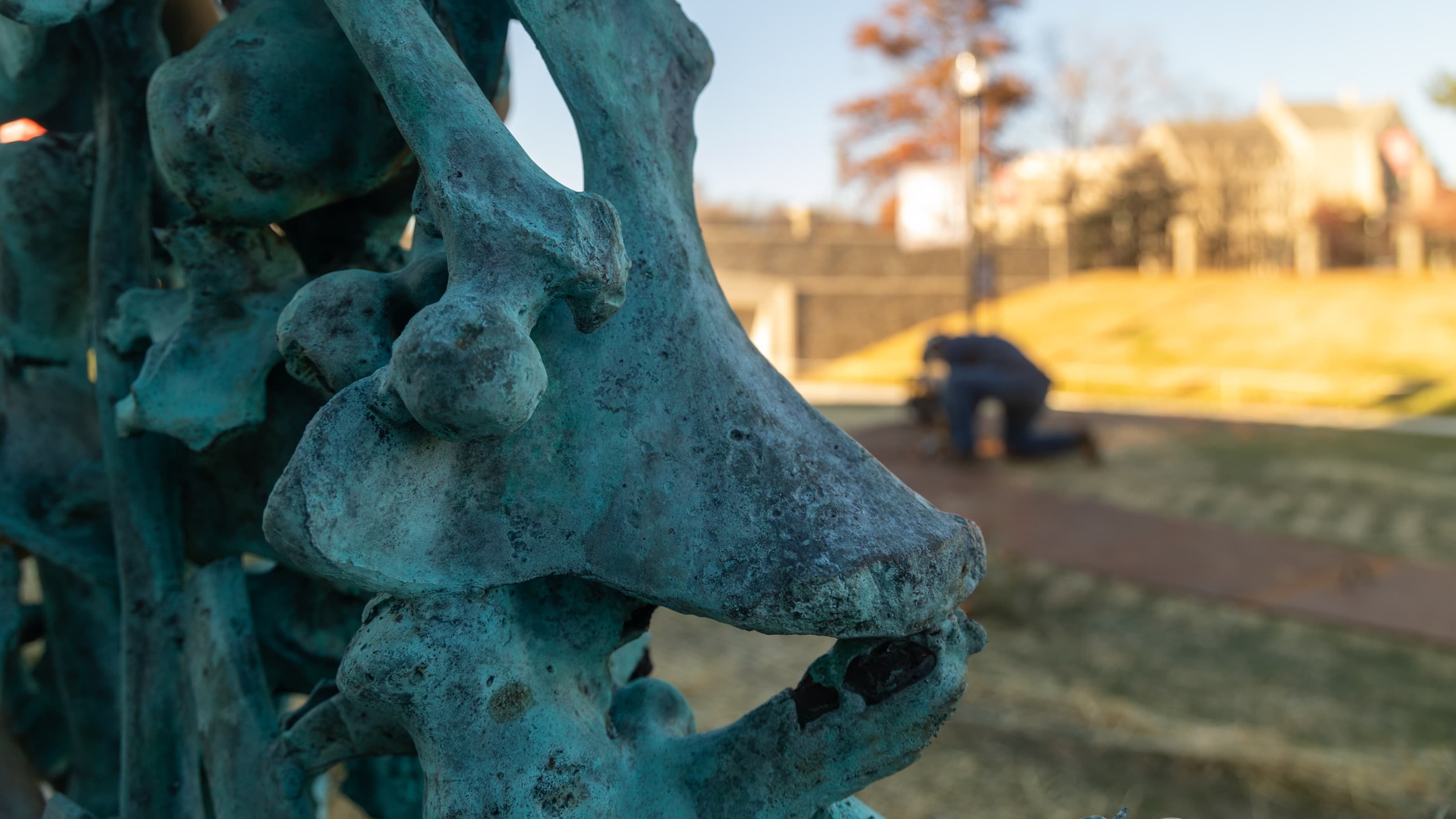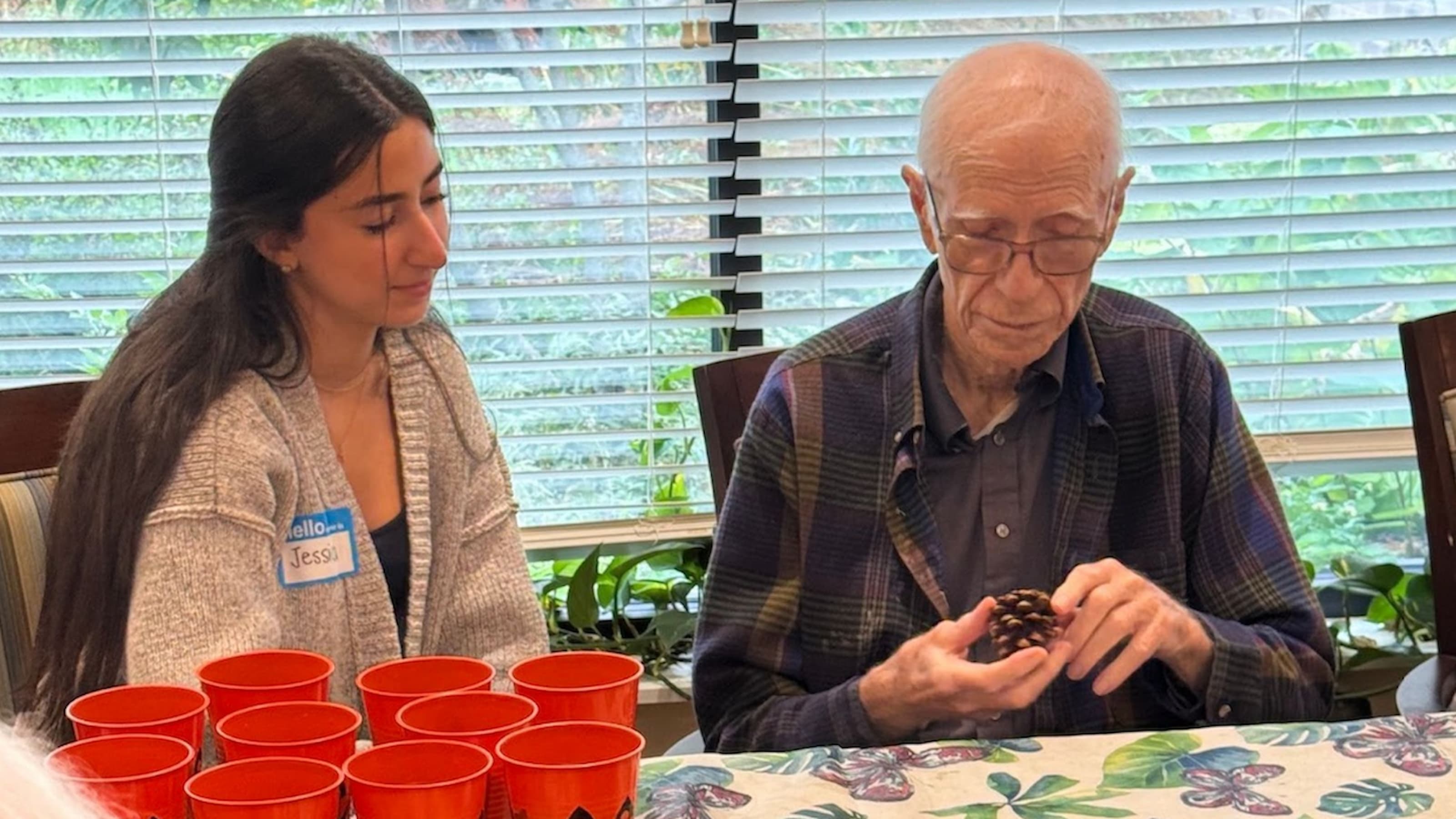Academics Al Fresco: Outdoor Classroom Provides a Fresh Take on In-Person Learning
The new outdoor classroom in the parking lot of Claver House is just one of the new or upgraded outdoor study and gathering spaces available to students on campus this fall.
 Susan Liebell, Ph.D., associate professor of political science and pre-law advisor, teaches students in the outdoor classroom near Claver House.
Susan Liebell, Ph.D., associate professor of political science and pre-law advisor, teaches students in the outdoor classroom near Claver House.
KEYS TO THE ARTICLE
- Saint Joseph’s created an outdoor classroom in an open-air tent behind Claver House as an option for students and faculty taking and teaching in-person classes this semester.
- The outdoor classroom is one of many enhanced health and safety protocols that the University has put in place to reduce the risk of spreading COVID-19, including enhanced Wi-Fi to encourage the use of outdoor study and gathering spaces.
- Susan Liebell, Ph.D., one of the faculty members teaching in the space, says students have been using it like a typical classroom, but also making sure to physically distance from her and from each other.
When Susan Liebell, Ph.D., heard that Saint Joseph’s was offering faculty the chance to take advantage of an outdoor classroom, she was one of the first to request a spot.
“At the time I requested teaching space in the tent, my hometown in New Jersey was hit very hard by COVID-19,” explains Liebell, an associate professor of political science and pre-law advisor. “I wanted to come back to campus safely. The outdoor classroom was the best possible way.”
The outdoor classroom, a large white tent in the parking lot behind Claver House, is just one of the new or enhanced outdoor gathering and study spaces available to students this fall. There is also strengthened Wi-Fi available at the baseball and softball bleachers, Curran or Claver Field, Villiger Lawn, Post Learning Commons and the Sweeney Field bleachers. The spaces are designed to encourage the students, faculty and staff to take advantage of the beauty of campus and the ease of physical distancing outdoors.
“We wanted to help start off the semester building the kind of trust that leads to robust engagement,” says Peter Norberg, Ph.D., associate provost for faculty. “Getting to know one another is very important during the first couple weeks of the semester in order for a class to work well…. We thought going outside would be a good way to meet in person and introduce ourselves.”
The outdoor classroom is being used by a half dozen faculty members for classes focused on topics including communications studies, criminal justice, health studies and theology. It has space for about 26 students. Each seat is located on top of a white square that is painted onto the ground in six-foot intervals in all directions. The sides of the tent are open, letting a warm breeze flow through the shady space, giving a clear view of St. Mary’s Lawn and the John P. Foley Campus Center. There is a whiteboard up front, a clock hanging on the side of the tent in the back, and a desk up front for the instructors’ books, papers and bags.
“I was surprised on day one – from the first minute – by how normal the class interaction was,” says Liebell. “I’ve taught this particular class for 17 years here at St. Joe’s – sometimes once a year, sometimes twice. I know what people say on the first day of class. I got every single student in the tent to respond on the first day, which is what I’d normally expect to get, and that’s what happened.”
“I was surprised on day one – from the first minute – by how normal class was.”
Susan Liebell, Ph.D.
Associate Professor of Political ScienceAdmittedly, there were a few learning curves at first. “My papers blew away,” Liebell says of her first few days teaching outside. “So [Norberg] brought me rocks from Acadia National Park that he’d collected with his family. I use them to anchor my papers. They have helped.” Liebell also requested the clock for the classroom. “I don’t like looking at my phone during class to check the time,” she explains. There is also construction nearby that Liebell had not expected when she first came to the tent. “Now, I don’t even think of it. I just talk loud.”
Allen Kerkeslager, Ph.D., is an associate professor of theology and religious studies, and a self-proclaimed “outdoors person”. For him, teaching in a tent is “an enjoyable break from my other classes. Better than Zoom any day.”
Rachael L. Sullivan, Ph.D., assistant professor of communications and media studies, also says she enjoys teaching outside, even with the quirks that come with teaching near a construction site. “I find the tent quite pleasant,” she says.
“It’s a lot of work, speaking that loudly for that amount of time,” adds Liebell, whose experience in the outdoor classroom was also the subject of a recent Washington Post story. “I have to constantly remind myself to project, to repeat questions for students who didn’t hear their classmates. That’s something I am going to start requesting of them going forward. They can use this as an opportunity to practice a skill – oral presentation. They can use this time to learn to clearly project, and be more verbally assertive.”
The students seem content in the outdoor classroom. “They’re neither excited nor perturbed,” says Liebell. “They treat this as a normal classroom.” She says the students are also very cognizant and respectful of the need to physically distance, however. “When my papers blew away, the students felt guilty because they couldn’t help me collect them, because they didn’t want to touch them. They wanted to respect my boundaries. I have another student who walks out of class with me every day, and she stays exactly six feet away the entire time, from Merion Hall to the Hagan Arena.”
As the semester continues, and summer fades into autumn and then winter, Liebell is committed to staying in the outdoor class. “We’ve had nothing but glorious weather in the tent so far,” she says. “But I have been trying to prepare the students. I sent them photographs of children in 1918, taking classes under bridges in the middle of winter.” She wants to impress on the students that this is their moment, and they should make the best of it. “There will be days when we’ll meet and close the sides of the tent because it’s raining,” says Liebell. “We might have to wear layers, or bring a sleeping bag to sit in. But I think we should take advantage.”



